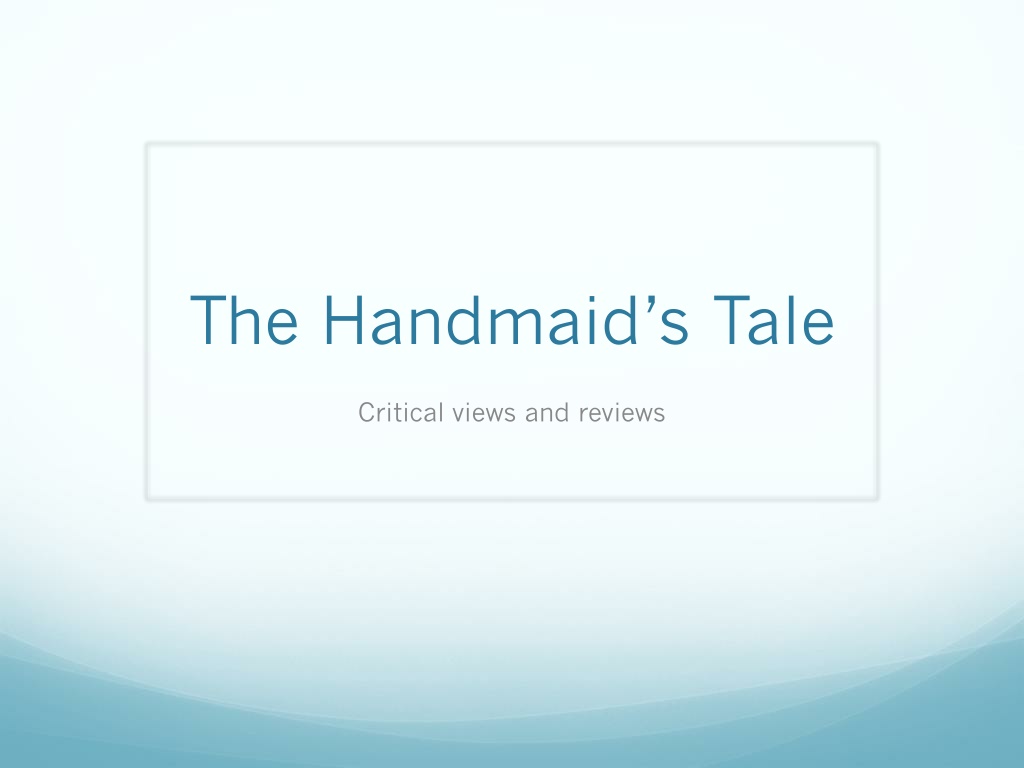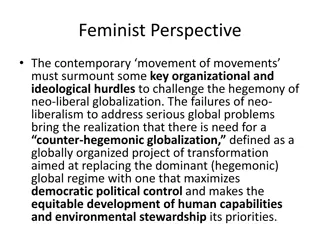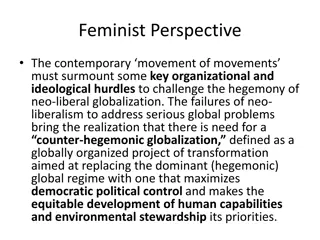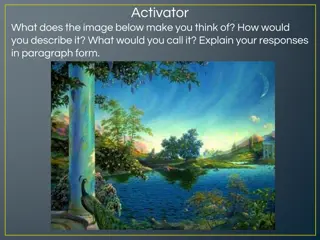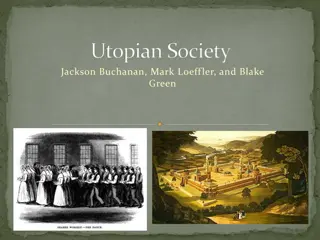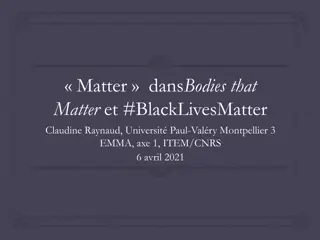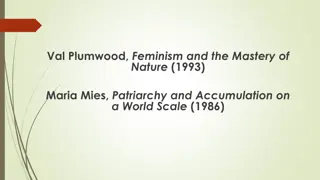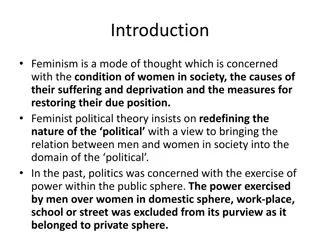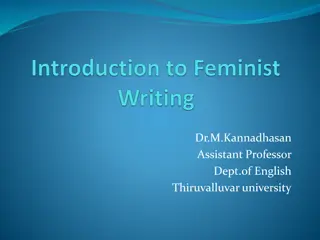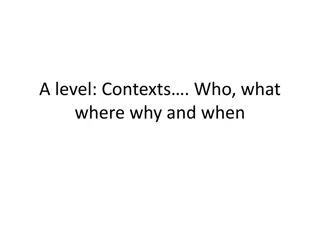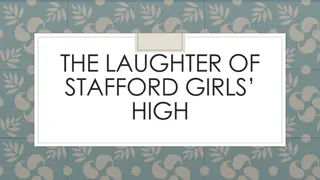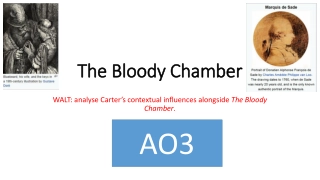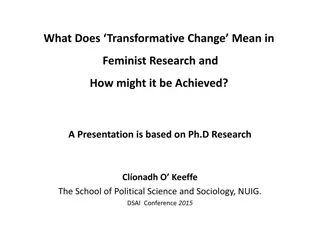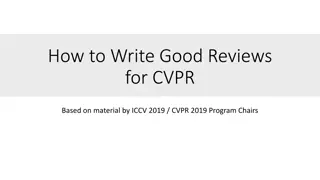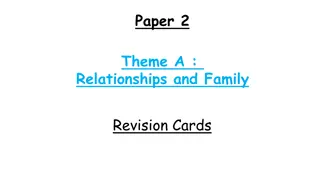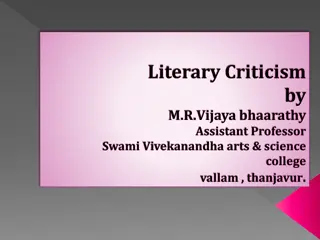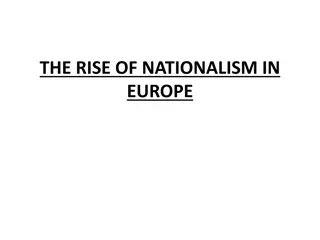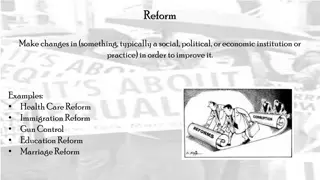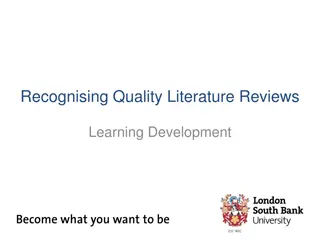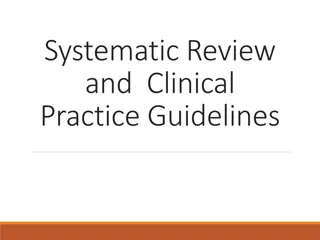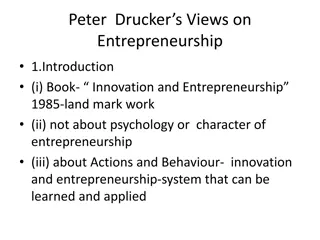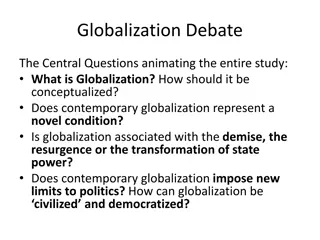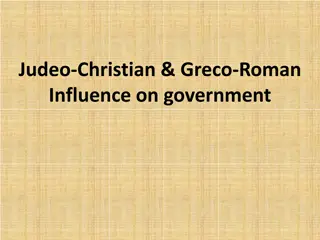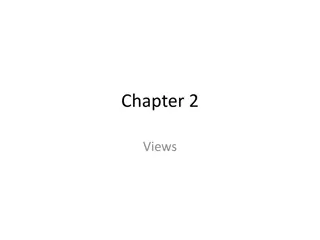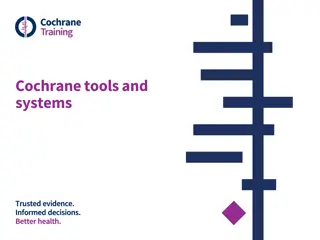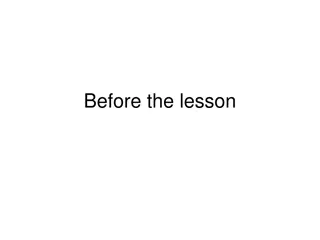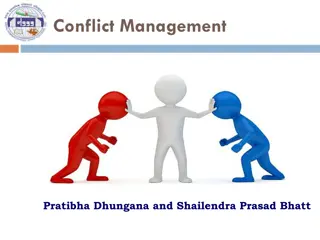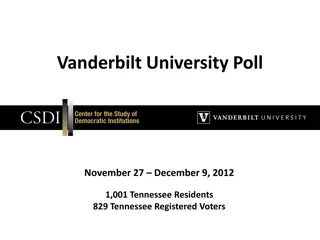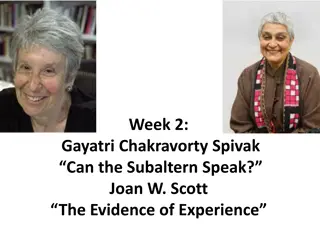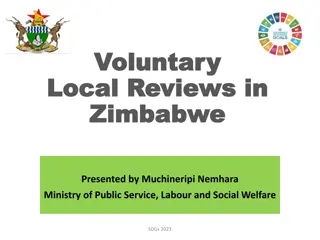Critical Views and Reviews of "The Handmaid's Tale" Through Feminist and Utopian Perspectives
The critical exploration of "The Handmaid's Tale" delves into themes of feminism, utopianism, and dystopian dangers. It discusses the portrayal of education, the impact of digitization, and the feminist utopias created by Margaret Atwood. The novel is commended for its reflection of societal issues and its relevance to contemporary and historical contexts.
Download Presentation

Please find below an Image/Link to download the presentation.
The content on the website is provided AS IS for your information and personal use only. It may not be sold, licensed, or shared on other websites without obtaining consent from the author. Download presentation by click this link. If you encounter any issues during the download, it is possible that the publisher has removed the file from their server.
E N D
Presentation Transcript
The Handmaids Tale Critical views and reviews
Feminism and Utopianism by Alessa Johns
Education in Feminist Utopias Fostered through conversation, which trains girls in current affairs, language and critical thinking Judith Drake s: Essay in Defence of the Female Sex (1696) suggests that girls were in fact more adept (skillfully) socially than boys because they participated in discussions of books rather than pursuing a classical education, which emphasised Latin and Greek
Dystopian Work Dangers of digitisation are depicted in the fundamentalist Republic of Gilead where: People s identities = stolen electronically Books = outlawed & burned Female narrator Offred, is desperately greedy for the intellectual stimulation of words, devours even a shabby, antiquated issue of Vogue magazine illicitly acquired through her Commander
Margaret Atwood: The Handmaid s Tale by Faye Hammill
Andrew Tidmarsh 1992: 24 Science fiction is a way of looking at things, and it s a way of looking at things that is very hard to do in any other kind of fiction. It s a creation of a different kind of metaphor.
Hammills Views The Handmaid s Tale (1985) remains the outstanding success of Atwood s career, and is the novel that made her an international celebrity
Atwoods Novels In all 3 books ( The Blind Assassin 2000, Oryx and Crake 2003 & The Handmaid s Tale 1985) Atwood creates a different kind of metaphor by constructing temporally distant societies whose apparent unfamiliarity only barley disguises their direct relevance to the novelist s present and to various earlier periods of human history The Handmaid s Tale describes a near-future USA society, the Republic of Gilead = a totalitarian theocracy governed by white, male supremacists
Atwoods influences While acknowledging the influence of writers such as Orwell and Huxley on her own work, she notes that: The majority of dystopias have been written by men, and the point of view has been male (Atwood 2003c)
Endings: Nineteen Eighty-Four and The Handmaid s Tale Winston Smith still seems doomed Atwood permits a greater measure of optimism by leaving open the possibility that Offred will escape. Her narrative ends when a van comes for her = ambiguous: Supposedly a police van, taking her to be executed as a subversive BUT could belong to the underground rescue operation - The very existence of the underground movement in Gilead, together with the Handmaid s success in recording her story, offer hope that the ideology of the regime can be challenged, and transforms the novel itself into a site of resistance against patriarchy and totalitarianism
Time Atwood s conception of time travel, then, does not involve a tardis but an imaginative reconstruction of an unfamiliar society, which may exist in the past or future, or.. both
Barbara Rigney, argues that these women are personifications of a religious sacrifice, temple prostities (Rigney 1987: 117) due to their red gowns worn The ideas voiced by the Aunts, the female control agency, read at times like a grotesque parody of the 1870s social purity movement, whose primary aims were the elimination of prostitution and of the sexual harassment and abuse of girls and women. The movement demonstrated an interesting fusion of feminist impulses within an old fashioned purity agenda (Jeffreys 1997: 195)
Robert Kidd Dystopia- A Overview
Dystopian Text Usually involves a world where a ruling ideology imposes its vision of social order on the masses as in Nineteen Eighty-Four or The Handmaid s Tale Often those in power insist that their vision of society is a perfect one a utopian world. What becomes clear in each re-working of the genre is that one individual s utopian idyll is a dystopian reality imposed on those who do not share his or her perfect vision
Gabriela Reigh Writing Women s Voices
Covert Resistance Set in a dystopian regime which reduces women to their biological function. By being cast as a Handmaid, Offred s identity = reduced to her physical body, as her ability to bear children is exploited by the government By naming her Offred (Of-Fred), the government attempts to wipe away her individuality and emphasise the fact that she is the property of the Commander, the man whose children she is required to conceive
Telling their own stories An important step in all the women s journey of self-discovery is the ability to tell their own stories Atwood uses the first person narrative to show the importance of women using language as a means of taking control of their lives it is the patriarchal society that owns language and therefore defines women Offred s desperation is portrayed during an illicit game of Scrabble with the Commander, where the pleasure she takes in controlling language again takes on an almost physical intensity . The feeling is voluptuous. This is freedom, an eyeblink of it
Independent: Lesley McDowell
McDowells Review Atwood s feminist dystopia has now reached the status of classic, and may well prove to be the book she is remembered for Its freshness, its anger and its disciplined, taut prose have only grown more admirable in the intervening years Atwood s novel was an ingenious enterprise that showed, without hysteria, the real dangers to women of closing their eyes to patriarchal oppression
The Guardian: Charlotte Newman
Newmans Review Atwood s chilling tale of a concubine in an oppressive future America is more vital than ever Fiercely political and bleak, yet witty and wise but Atwood has always maintained that the novel is not classifiable science fiction. Nothing practiced in the Republic of Gilead is genuinely futuristic. She is right, and this novel seems ever more vital in the present day, where women in many parts of the world live similar lives, dictated by biological determinism and misogyny
